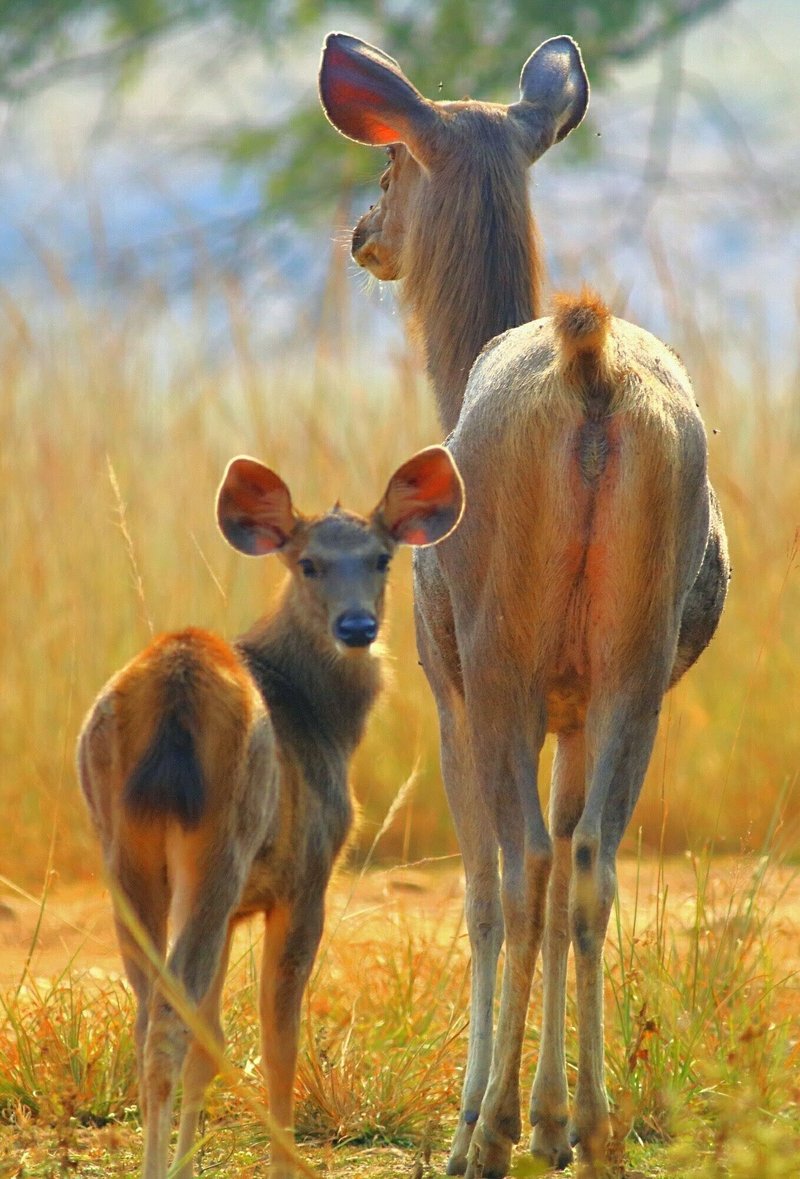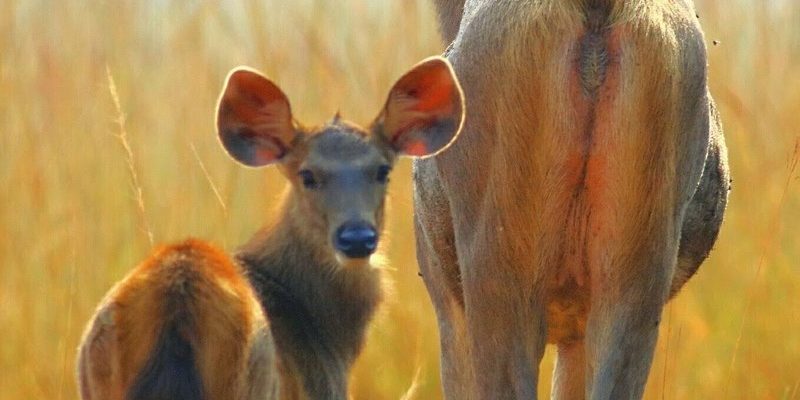
Imagine walking through a sun-drenched savanna where grass sways gently in the breeze. You’re likely to spot a few Ugandan Kobs gracefully grazing in groups. Their striking reddish-brown coats make them a beautiful sight, but it’s their feeding habits and interactions that tell a deeper story about life in the wild. So, let’s dive into the diet and hunting strategies of the Ugandan Kob and discover how this antelope stays alive and thriving in its environment.
What Do Ugandan Kobs Eat?
Ugandan Kobs are herbivores, meaning they primarily feed on plant material. Their diet mainly consists of grasses, which can be found in abundance across the savannas and wetlands of Uganda. The kobs are particularly fond of tender shoots and young grass, which provide not only the nutrition they need but also a relatively low effort in terms of foraging. Think about it like this: for them, it’s all about finding the salad bar with the freshest greens!
In addition to grasses, these antelopes also indulge in leaves and herbs. During the rainy season, when the grass grows taller and greener, Ugandan Kobs ramp up their grazing. They have a remarkable ability to spot nutritious food, and they often travel in herds to cover more ground. For these animals, teamwork makes the grazing dream work.
Another interesting aspect of their diet is their need for water. These animals prefer to stay close to water sources, especially during the dry season. You might be wondering why that’s important—well, staying hydrated is essential for survival, especially in hot climates. So, you’ll often find Ugandan Kobs near rivers or lakes, munching on grass while keeping a close eye out for predators.
How Do Ugandan Kobs Find Food?
Finding food in the wild isn’t as straightforward as strolling through a supermarket. Ugandan Kobs have honed their skills to locate the best grazing spots. They are excellent at sensing the changing landscapes and can quickly adapt to different areas depending on the season.
During the wet season, when grasses are plentiful, they tend to migrate to areas with the freshest growth. This behavior helps them minimize competition with other herbivores. It’s kind of like knowing where the best picnic spots are in a park during a busy weekend!
The Kobs also use their keen sense of smell to find food. They can detect fresh growth from a distance, which tells them where to head next. This ability is particularly helpful when they’re foraging in larger groups, as it helps them stay together and maximize their foraging success.
And let’s not overlook their eyes. They have a unique vision that allows them to spot predators lurking nearby while they’re munching on grass. Balancing eating with being aware of their surroundings is crucial for their survival, and these skills are sharpened by experience and instinct.
Hunting Strategies of the Ugandan Kob
Now, you might be surprised to learn that Ugandan Kobs aren’t hunters in the traditional sense, as they primarily feed on plants. However, they do employ certain strategies to protect themselves from predators, which is just as vital to their survival.
One of their primary defenses is their group behavior. Kobs often graze in herds, which can be a significant advantage when it comes to spotting danger. By sticking together, they create a network of eyes that enhances their ability to detect predators like lions or leopards. It’s like having a buddy system in place: the more, the safer!
When threatened, Ugandan Kobs often exhibit a behavior called stotting. This is when they jump high into the air, showcasing their strength and fitness to potential predators. It’s their way of saying, “Hey, I’m not an easy meal!” This behavior can deter predators, making them reconsider chasing after such an agile and fit target.
In addition to stotting, these antelopes are also quick on their feet. Their speed allows them to escape quickly if needed. They can run at impressive speeds to evade threats, using their agility to navigate through the dense grasslands. It’s fascinating to think about how their bodily adaptations play a crucial role in their survival.
Social Dynamics and Grazing Behavior
The social structure within Ugandan Kob herds is also quite intriguing. Females, along with their young, often form distinct groups, while males might stick together during non-breeding seasons. This social dynamic helps ensure that the females and their young are safe while allowing males to establish their strength and social rank.
During the breeding season, males will display their impressive antlers and engage in vocalizations to attract females. It’s like a friendly competition where the strongest and most impressive males get the chance to mate. Here’s the thing: by showcasing their physical prowess, they also contribute to the overall health of the herd’s genetics.
Grazing behavior is generally more efficient when done in a group. Multiple kobs can cover larger areas and find food faster. Plus, they can keep an eye on each other while grazing, balancing the need to feed with the need to be vigilant.
Interestingly, their social behaviors don’t just help with survival; they also create a community. You might catch Kobs grooming each other or playing, which strengthens their bonds. Just like people, these social interactions are essential for their emotional health.
Seasonal Variations in Diet and Hunting
The Ugandan Kob’s diet and hunting strategies can change with the seasons. During the wet season, when grasses are abundant, their foraging becomes more relaxed, and they spend more time grazing. Conversely, in the dry season, when food sources dwindle, they need to be more strategic in finding nourishment.
During the dry spell, kobs may shift their focus to areas with less competition or migrate further in search of food and water. This adaptability is crucial, as failing to find enough to eat can be detrimental to their survival. You could think of it like adjusting your diet based on what’s available at the grocery store; flexibility is key!
Moreover, seasonal changes also influence predator behavior. During the dry season, predators might be more desperate for food, which means Ugandan Kobs need to be extra alert. Their collective vigilance during these times can help keep the herd safe while also ensuring they can still find enough to eat.
In summary, the Ugandan Kob is a fascinating creature with a remarkable diet and effective survival strategies. Their ability to adapt to changing conditions, find food, and keep each other safe speaks to nature’s incredible design.
The Importance of Conservation
With all these intriguing behaviors and adaptations, it’s important to remember that Ugandan Kobs face threats due to habitat loss and poaching. Their existence is crucial to the ecosystem, as they support various predator and plant communities. Losing them would disturb the balance of their environment.
Conservation efforts are critical for ensuring that the Ugandan Kob continues to thrive in its natural habitat. Protected areas and awareness programs can help mitigate threats and promote healthy populations. It’s like a community effort—by working together, we can ensure future generations can appreciate these beautiful antelopes.
So, the next time you hear about the Ugandan Kob, you’ll know they’re not just a cute animal but a vital part of their ecosystem. Understanding their diet and hunting strategies gives us a glimpse into the delicate balance of life in the wild.
In conclusion, the Ugandan Kob is a fascinating animal with a rich life centered around diet and survival strategies. Their ability to adapt to seasonal changes, work together in groups, and evade predators is nothing short of impressive. If we care about the environment, staying informed and supportive of conservation efforts will help secure a future for these incredible antelopes.

